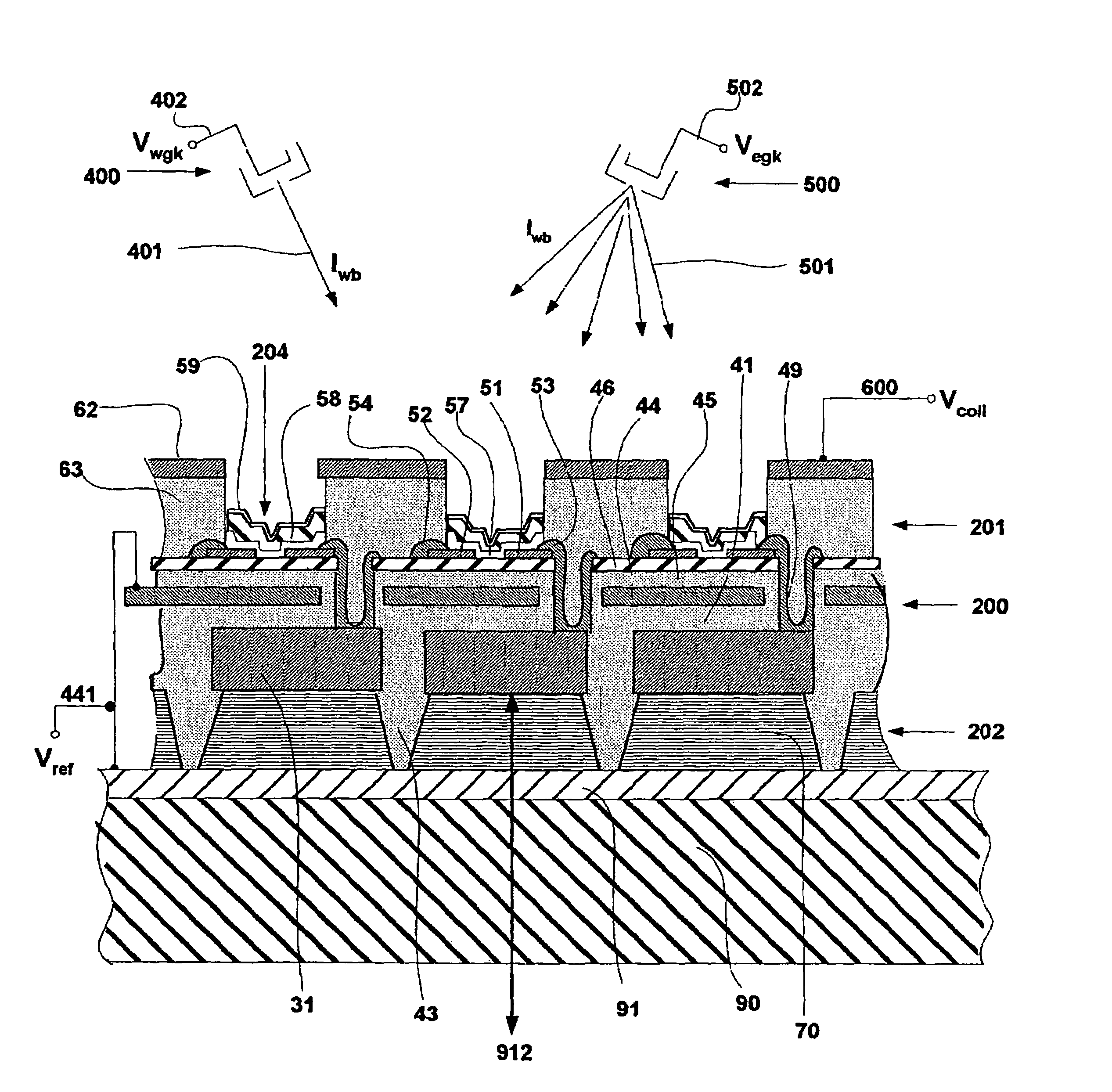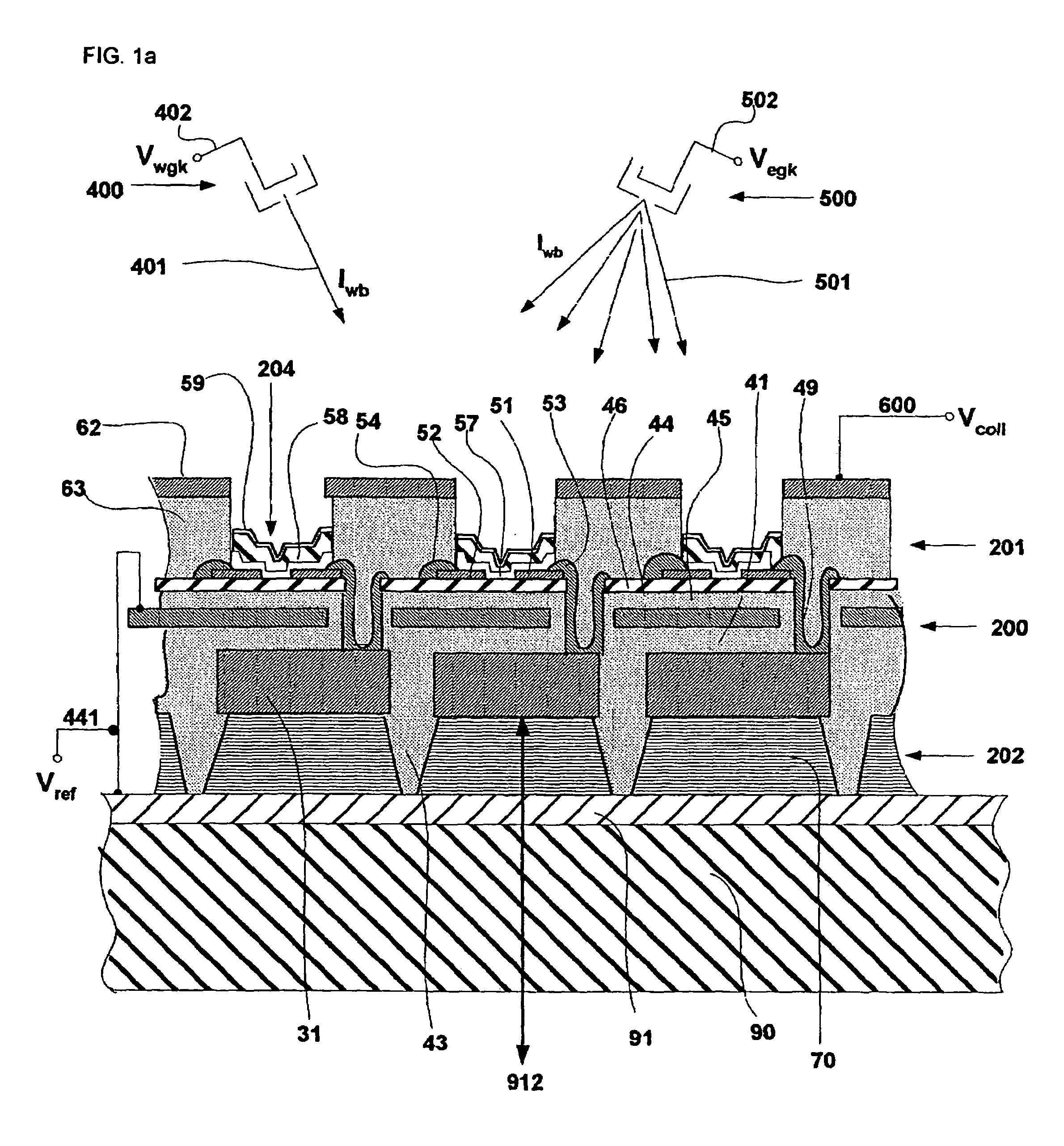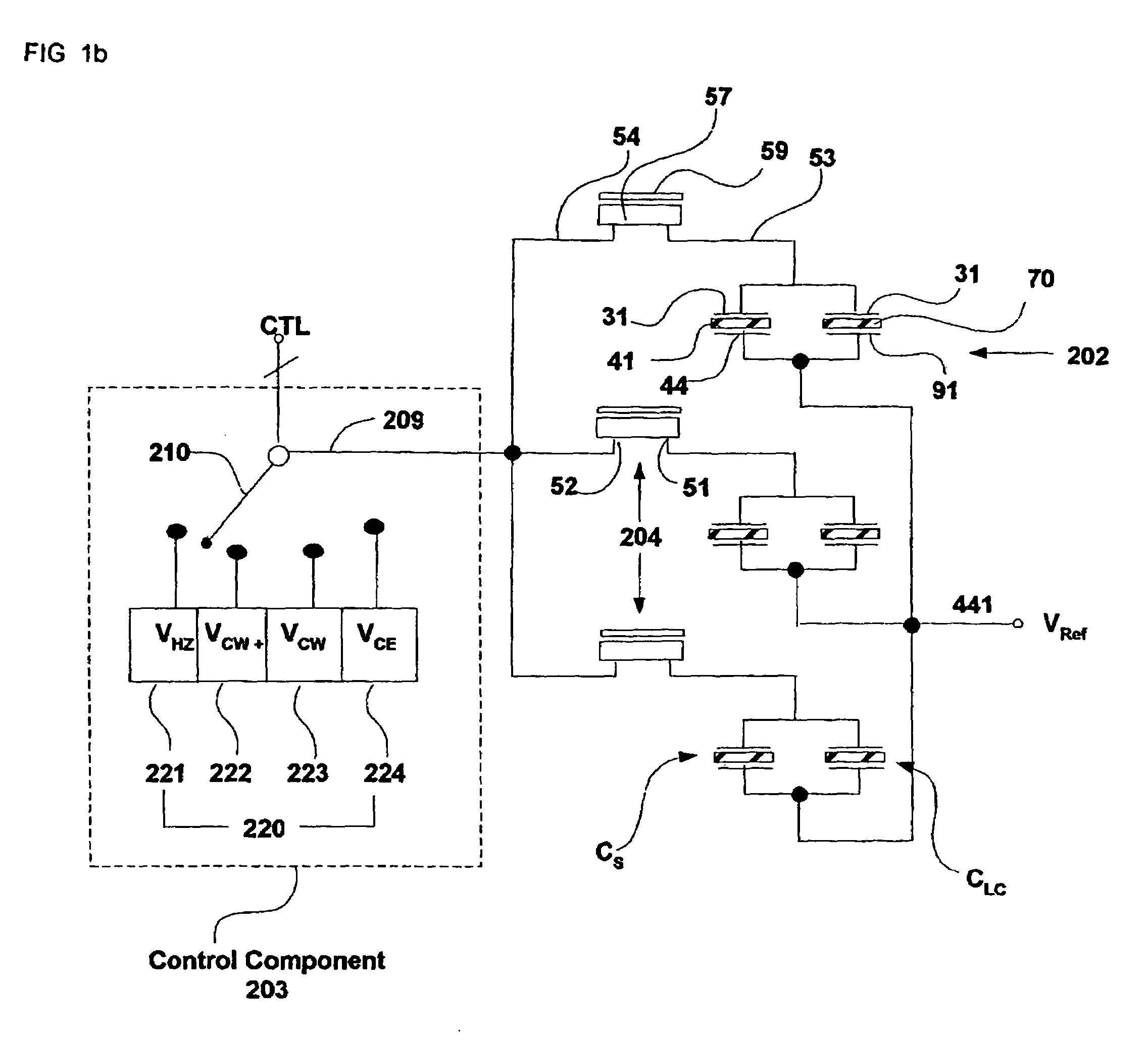Electron-beam-addressed active-matrix spatial light modulator
- Summary
- Abstract
- Description
- Claims
- Application Information
AI Technical Summary
Benefits of technology
Problems solved by technology
Method used
Image
Examples
Embodiment Construction
[0057]The present invention furnishes a reflective liquid-crystal light modulator addressed by an array of thin-film transistors, wherein each display element has electrical and mechanical isolation from adjacent and proximate display elements. Image information is provided to the active array by means of a scanning electron beam.
[0058]Referring to the drawings, FIGS. 1a and 1b (collectively “FIG. 1”) together illustrate a reflective liquid-crystal light modulator in accordance with the invention. The light modulator of FIG. 1 includes a thin flexible membrane 200, an active matrix 201 disposed along one side (the upper side in FIG. 1a) of membrane 200, a two-dimensional array of display electrodes 31 disposed along the other side (the lower side in FIG. 1a) of membrane 200, electrically conductive means 49 for electrical communication between active matrix 201 and display electrodes 31, a layer 70 of liquid crystal divided into a two-dimensional array of liquid-crystal cells 202 re...
PUM
 Login to View More
Login to View More Abstract
Description
Claims
Application Information
 Login to View More
Login to View More - R&D
- Intellectual Property
- Life Sciences
- Materials
- Tech Scout
- Unparalleled Data Quality
- Higher Quality Content
- 60% Fewer Hallucinations
Browse by: Latest US Patents, China's latest patents, Technical Efficacy Thesaurus, Application Domain, Technology Topic, Popular Technical Reports.
© 2025 PatSnap. All rights reserved.Legal|Privacy policy|Modern Slavery Act Transparency Statement|Sitemap|About US| Contact US: help@patsnap.com



